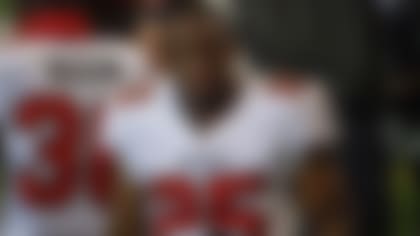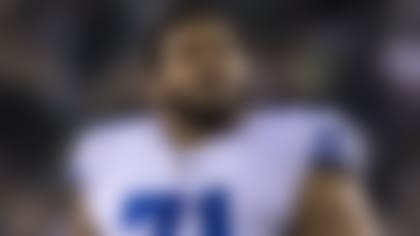The final wayward throw of Peyton Manning's first season with the Denver Broncos will live on in infamy, like Brett Favre's interception in the 2010 NFC Championship Game. It was so out of character of Manning to force a pass across his body. It was the act of a young player or a desperate player.
But that wasn't the throw that stuck out most in my mind after Denver's loss. I remembered a wobbly third-down pass to Brandon Stokley in overtime. At a huge moment in the game, Manning's arm didn't appear to have enough juice for a routine throw.
That throw, combined with an utter lack of vertical passing from Denver, created a lot of talk centered around whether Manning's arm strength was a problem in the bitter cold. Steve Wyche of NFL.com relayed from one Ravens source that safety Ed Reed played in the deep center field the entire game. The Ravens were daring Manning to go deep, but he didn't test them.
Ravens cornerback Corey Graham, who picked off Manning twice, said Manning's patience to dink and dunk gave Baltimore confidence.
"Graham said that the Ravens' defensive backs became more brazen as the game went on, since they weren't being challenged deep," Wyche wrote. "As the possessions increased in importance, it seemed as if Denver was more intent on moving the chains than taking chances."
The Broncos scored one time on their final eight offensive possessions, not including the team's two possessions where John Fox called for Manning to take a knee instead of try to drive and set up for a field goal. I believe Fox coached not to lose. His timidity was a huge factor in the defeat. But perhaps he had concerns with Manning's ability to push the ball down the field?
With the help of Game Rewind, I went back to watch all of Manning's throws. There were some other concerning moments besides the throw to Stokley. Three examples:
Manning's accuracy started to wane late in the first half. He played a very strong first half and a good game overall, but it started to go south late in the second quarter. The first two plays above aren't "arm strength" throws by any means, but they were critical mistakes from Manning. It's impossible to say if the weather or his injury played a factor here, but you don't normally see those mistakes from Manning. His struggles on that drive allowed the Ravens to get the ball back late in the first half, and Joe Flacco capitalized with a touchdown. It a was huge turning point.
The third play on the reel above wasn't an egregious mistake, but the velocity was lacking on the third-quarter throw. Eric Decker had to wait for the ball, allowing the cornerback to make a play. Timing could have been an issue, a stronger throw gets there in time.
If you believe that Manning's arm strength was a problem, your best argument resides in Denver's play-calling. Manning did not push the ball down the field vertically one time after a try to Demaryius Thomas in the first quarter. NFL.com's play-by-play saysJoe Flacco threw 12 "deep" passes in the game; Manning threw two.
The Ravens tried to take away the middle of the field and force Manning to throw to the sidelines. But even those throws were minimal; almost everything in the second half was short and/or toward the middle of the field. On Monday, Fox said that he "doesn't believe" the temperatures prevented Manning from throwing deep.
Denver's play-calling, including the decision to run on third-and-7 after the two-minute warning, indicates a team that was not playing aggressively. The tape, however, does not clearly show Manning's arm strength diminishing during the game. Let's take a look:
I came into this exercise expecting to see more poor throws by Manning. They weren't there. It was a very good, not great, game by Manning until his final throw. I included a strong early throw from Manning to Eric Decker on the sideline to establish that he was throwing pretty well early. His two touchdowns were gorgeous touch passes. But Manning also showed good arm strength and velocity on passes during the third quarter and even in overtime.
The last throw in the video above goes to Decker as well. That's only a few plays before Manning's game-turning interception. Manning showed good velocity on the throw. Anyone saying Manning couldn't throw the ball late in the game is cherry-picking plays.
The Great Unknown
The Broncos hit a lot of big plays throughout the season, with Manning showing increased ability to go vertical throughout the year. They simply didn't try to go deep against Baltimore. That may have been because of the weather, Ed Reed or possibly Manning's arm strength. There just isn't a ton of proof of the latter theory.
The plays above, added up, show that Manning's arm perhaps isn't as reliable as it was when he was younger. Manning didn't even attempt many deep sideline passes. But Manning was never defined by his arm strength. He still made some strong throws deep into overtime.
The Broncos relied too much on the run in the fourth quarter and overtime. They did not call plays aggressively and Manning didn't throw deep aggressively throughout the game.
Only Manning and the Broncos know if they played it safe because he was struggling to throw. But the tape doesn't indicate he was any different in overtime than he was early in the game.
Manning's arm strength does not rank high on the list of reasons the Broncos lost.
Follow Gregg Rosenthal on Twitter @greggrosenthal.












